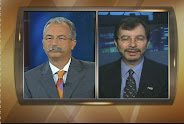Quotable Quotes: Ignorance is Bliss
 “What are the implications if originators no longer feel the need for due diligence, and the ultimate buyers do not have the skills or the information required to manage the risks inherent in the complex instruments they are buying?”
“What are the implications if originators no longer feel the need for due diligence, and the ultimate buyers do not have the skills or the information required to manage the risks inherent in the complex instruments they are buying?”
BIS 77th Annual Report
“As head of the financial stability unit at the Banque de France, Imène Rahmouni-Rousseau travelled to America this month to look at the current turmoil in the US subprime mortgage world. Although initially that had seemed an all-American saga, Ms Rahmouni suspected that French and other European investors also held assets linked to subprime securities. So on behalf of her central bank she wanted to assess the risks. What she discovered surprised her. There was little confidence about how to value the holdings. “Pricing data are difficult to obtain,” she says.”
Saskia Scholtes and Gillian Tett, FT article “Worries grow about the true value of repackaged debt”
“All you need in this life is ignorance and confidence, and then success is sure.”
Mark Twain
“Fear always springs from ignorance”
Ralph Waldo Emerson
“Make yourselves sheep and the wolves will eat you”
Benjamin Franklin
Have a good weekend.





































